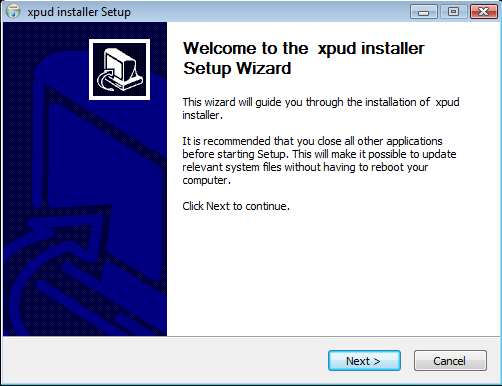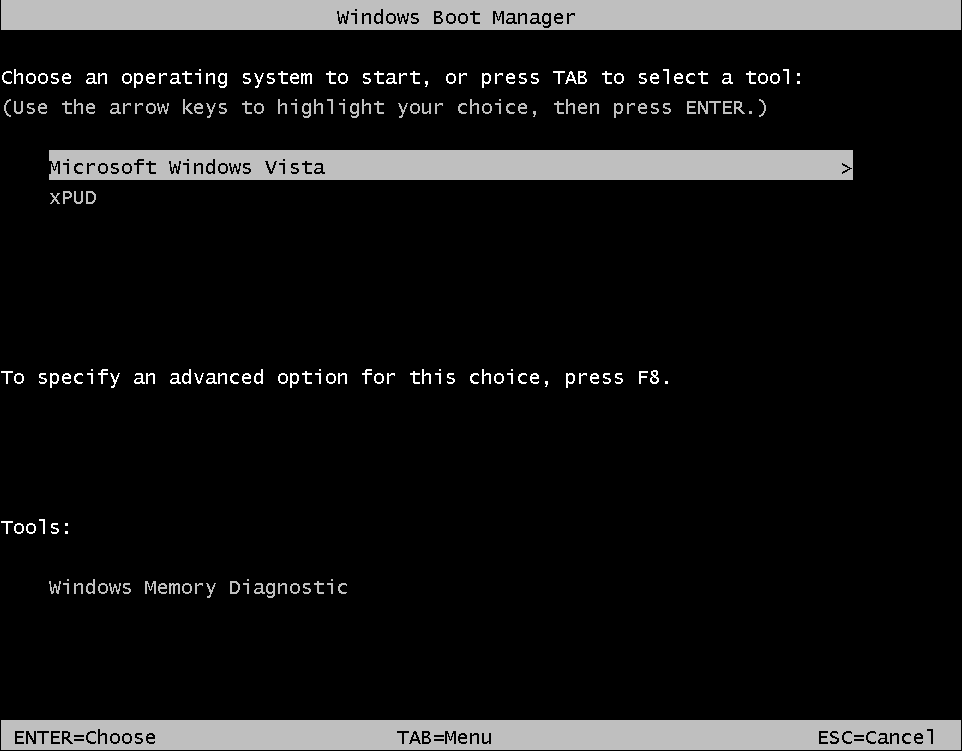xPUD is an unique Linux distribution, consisting mainly of a web browser and a media player, with a simple user interface on top. It can turn your computer into a kiosk-like station by leveraging web technologies, making surfing and watching movies as easy as pie.
It's fast, on average booting within 10 seconds (demo on YouTube), and it's small, too. Core image is weighing in at under 35 MB, yet it still remains binary compatible with most major Linux distributions like Ubuntu or Fedora. So xPUD can not only be a great platform to deliver Web Apps, but it's also suitable for use on Netbooks or All-in-one PCs.
Requirements:
256MB RAM and 64MB free disk required.
Download (Latest Release: Version 0.9.2)
Download ISO image: xpud-0.9.2.iso (64MB)
Creating LiveCDThis is a bootable CD image. To boot from
it you will need to:
- Download the image above
- Burn it using a CD-R or CD-RW drive
- Set CDROM to first boot device in BIOS
- Running in Virtual Machine
You can also run xPUD with virtual machine like
VirtualBox, VMware and QEMU. Note that
network device should set to pcne
Mirror Sites
http://soldat.gr/xpud/
http://ftp.ubuntu-tw.org/mirror/download.xpud.org/
ftp://ftp.dorm.ccu.edu.tw/pub/Linux/xPUD/
http://mesrss.free.fr/
Creating LiveUSB
- Download LiveUSB creator for Windows or Linux
- Insert your USB drive into computer, then double click it to execute
- After done, rename isolinux.cfg to override syslinux.cfg on your drive
Install xPUD on Windows XP/Vista/7
Download installer for Windows: xpud-0.9.2.exe (64MB)
NOTE: Still in testing, use at your own risk!
xPUD will be installed under C:\xpud and dual boot with Windows.
Install xPUD on LinuxDownload image for Linux: xpud-0.9.2-image (45MB)
We don't have installer for Linux yet, but you can do it manually by configure your boot loader. For example, if you're using GRUB on first partition:
title xPUD 0.9.2
root (hd0,0)
kernel /xpud-0.9.2-image noisapnp quiet lang=en screen=1024x786
You can also boot the ISO image by using Grub2:
menuentry "xPUD 0.9.2" {
loopback loop (hd0,0)/xpud-0.9.2.iso
linux(loop)/boot/xpud isofrom=/xpud-0.9.2.iso noisapnp quiet
initrd (loop)/opt/media
}
By: Ramkrishna Guchhait
It's fast, on average booting within 10 seconds (demo on YouTube), and it's small, too. Core image is weighing in at under 35 MB, yet it still remains binary compatible with most major Linux distributions like Ubuntu or Fedora. So xPUD can not only be a great platform to deliver Web Apps, but it's also suitable for use on Netbooks or All-in-one PCs.
Requirements:
256MB RAM and 64MB free disk required.
Download (Latest Release: Version 0.9.2)
Download ISO image: xpud-0.9.2.iso (64MB)
it you will need to:
- Download the image above
- Burn it using a CD-R or CD-RW drive
- Set CDROM to first boot device in BIOS
- Running in Virtual Machine
You can also run xPUD with virtual machine like
VirtualBox, VMware and QEMU. Note that
network device should set to pcne
Mirror Sites
http://soldat.gr/xpud/
http://ftp.ubuntu-tw.org/mirror/download.xpud.org/
ftp://ftp.dorm.ccu.edu.tw/pub/Linux/xPUD/
http://mesrss.free.fr/
Creating LiveUSB
- Download LiveUSB creator for Windows or Linux
- Insert your USB drive into computer, then double click it to execute
- After done, rename isolinux.cfg to override syslinux.cfg on your drive
Install xPUD on Windows XP/Vista/7
Download installer for Windows: xpud-0.9.2.exe (64MB)
NOTE: Still in testing, use at your own risk!
xPUD will be installed under C:\xpud and dual boot with Windows.
Install xPUD on LinuxDownload image for Linux: xpud-0.9.2-image (45MB)
We don't have installer for Linux yet, but you can do it manually by configure your boot loader. For example, if you're using GRUB on first partition:
title xPUD 0.9.2
root (hd0,0)
kernel /xpud-0.9.2-image noisapnp quiet lang=en screen=1024x786
You can also boot the ISO image by using Grub2:
menuentry "xPUD 0.9.2" {
loopback loop (hd0,0)/xpud-0.9.2.iso
linux(loop)/boot/xpud isofrom=/xpud-0.9.2.iso noisapnp quiet
initrd (loop)/opt/media
}
By: Ramkrishna Guchhait





No comments:
Post a Comment